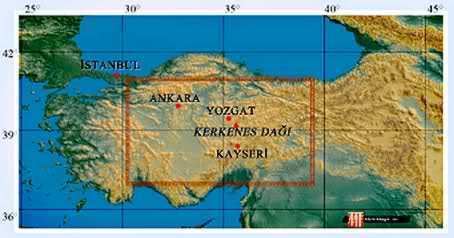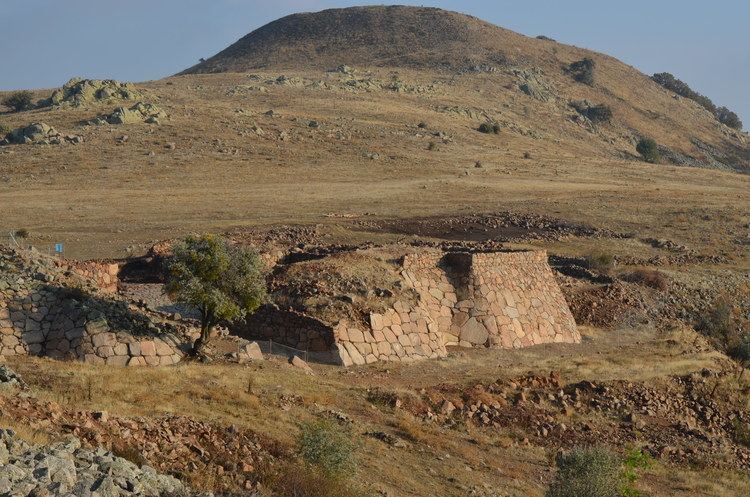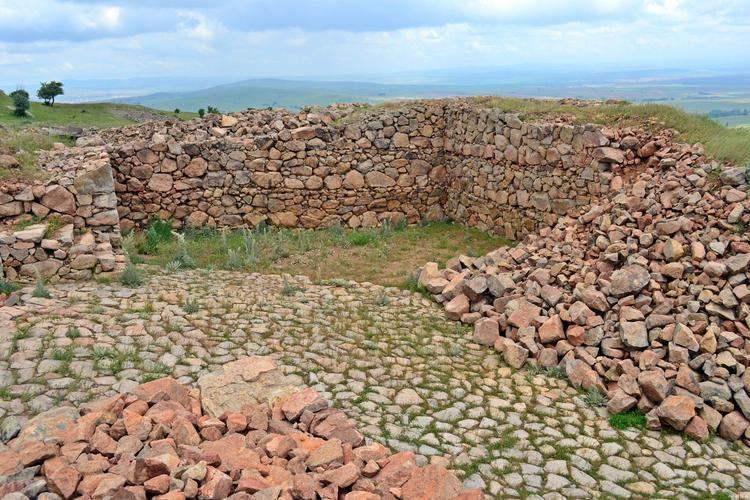Kerkenes (or Kerkenes Dağ; both names are modern) is the largest pre-Hellenistic site from the Anatolian Plateau (Turkey) – 7 km (4 mi) of strong stone defenses, pierced by seven gates, that enclose 2.5 km² (1.0 sq mi). It is located about 200 km (120 mi) east from Ankara (35.06E, 39.75N), between the towns of Yozgat (W) and Sorgun (E).
Contents
History

It has been suggested that this was a Hittite site in the Bronze Age, with the underlying hill being the sacred mountain Daha and the developed area being the town of Zipallanda. The huge overlaying Iron Age construction makes this very difficult to verify.

The Iron Age city, apparently a planned urban space, was only briefly occupied and is extremely large. This has suggested to some that the city was an imperial foundation of non-local peoples. Although its historical context remains unclear, Phrygian remains have been found. The archaeological survey shows that the city was burned, destroyed, and abandoned.
The site also contains a Byzantine castle.
Archaeology

The site was first examined in 1903 by J. G. C. Anderson. In 1926 and 1927 H. H. von der Osten and F. H. Blackburn conducted a preliminary survey of the site and made a map of the city defences. Also in 1926, the site was visited by Emil Forrer In 1929 Erich Schmidt excavated at Kerkenes Dagh for around a week for the Oriental Institute of Chicago.

The new, international Kerkenes Project has started in 1993, directed by the British archaeologist Geoffrey Summers and Françoise Summers, both from Middle East Technical University (Ankara). Current fieldwork is ongoing.
Geoffrey Summers initially identified the site with the city of Pteria of the Medes, mentioned by Herodotus, who describes the place as being captured by the Lydian king Croesus around the year 547 B.C. The Median identification has been rejected by various scholars, including Summers himself; instead the site is being regarded as a local Phrygian dynastic center, very possibly Pteria.
